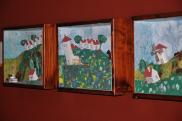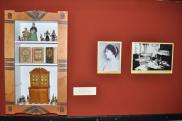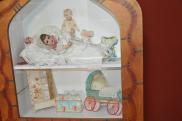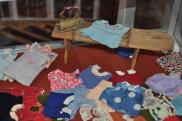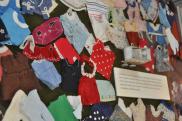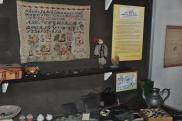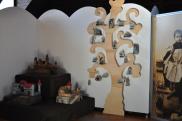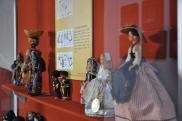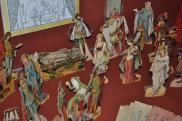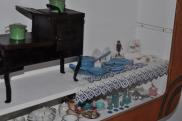2024. May 4. Saturday
Szórakaténusz Toy Museum and Handworkshop - Kecskemét
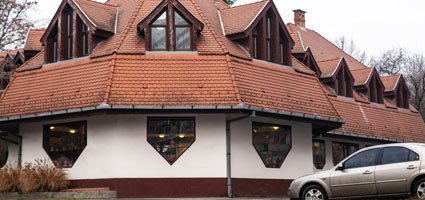 |
Address: 6000, Kecskemét Gáspár András utca 11.
Phone number: (76) 481-469
E-mail: muzeumesmuhely@szorakatenusz.hu
Opening hours: Tue-Sat 10-12:30, 13-17
|
The exhibition has closed for visitors.
2015.03.06. - 2015.09.19.
Museum tickets, service costs:
|
Individual ticket for adults
|
600 HUF
|
/ capita
|
|
Individual ticket for students
|
300 HUF
|
/ capita
|
|
Individual ticket for students
(with activities)
|
700 HUF
|
/ capita
|
|
Individual ticket for pensioners
|
300 HUF
|
/ capita
|
|
Ticket for families
(a relative accompanying children under the age of 18)
|
300 HUF
|
/ capita
|
|
Individual combined ticket for adults
(Szórakaténusz Toy Museum and Handworkshop + "Cifrapalota" Exhibition Place + The Museum of the Hungarian Naive Artists)
|
1800 HUF
|
/ capita
|
|
Individual combined ticket for adults
(Szórakaténusz Toy Museum and Handworkshop + The Museum of the Hungarian Naive Artists)
|
850 HUF
|
/ capita
|
|
Individual combined ticket for students
(Szórakaténusz Toy Museum and Handworkshop + The Museum of the Hungarian Naive Artists)
|
500 HUF
|
/ capita
|
|
Individual combined ticket for pensioners
(Szórakaténusz Toy Museum and Handworkshop + The Museum of the Hungarian Naive Artists)
|
500 HUF
|
/ capita
|
|
Group guide
|
2000 HUF
|
Way back in time... who would not remember a celebration in their childhood, or the mysterious shining lights, or the play of colours or smells, even the distant warm voice of our parents. Most of us still in treasure certain objects that help us recollect our memories. What decisive impact do surrounding objects have on children, kind words or simple melodies?
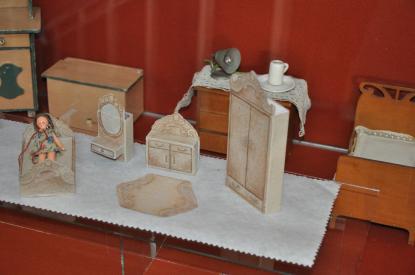
Essentially, the first recognition directed all the efforts at the turn of the 19th and 20th century, which studied toys intended for young children.
It is barely possible to pick a detail of all the decisive scenes, in this case, the rich world of toys and game , some of which are toys once used by children in villages some are technological wonders, some come to life, recalling Hungarian tales and legends, reviving immortal classic of children's literature.
Margit Kaffka's work 'Little People, My Friends' was published by Pallas Literature print Rt – despite the date 1918 in the book, it was in reality published in December 1917, illustrated by the young Ernő Jeges.
The speciality of the book by Margit Kaffka she wrote in wartime that all the important features of the toys on the market those days is dealt with in themselves and in interrelated chapters. Its novelty lay in the fact that beside the readymade games, the book provided patters for children of how to play, how to make toys and did so in a way that it conjured up the wholeness of a child's life through its own experiences and knowledge. Thus, in addition to a lot of practical advice - a literary work with special atmosphere was handed over to the reader.
The items on display were selected from the Szórakaténusz Collection by organizers to complement the main ideas behind each chapter. There are some the same age as the book we mentioned above, books purchased in one from the shops, readymade toys but we will also find self-made items from the 1950 or even from the past decades as well. All these games are reminiscent of the ever-creative, children at play, which with the moment they preserve, were so dominant for the toy makers of the past that they gave them to museums to have them preserved for ever. Isn't that strange that the book we mentioned by Margit Kaffka also ends with a museum opened by a child.

Essentially, the first recognition directed all the efforts at the turn of the 19th and 20th century, which studied toys intended for young children.
It is barely possible to pick a detail of all the decisive scenes, in this case, the rich world of toys and game , some of which are toys once used by children in villages some are technological wonders, some come to life, recalling Hungarian tales and legends, reviving immortal classic of children's literature.
Margit Kaffka's work 'Little People, My Friends' was published by Pallas Literature print Rt – despite the date 1918 in the book, it was in reality published in December 1917, illustrated by the young Ernő Jeges.
The speciality of the book by Margit Kaffka she wrote in wartime that all the important features of the toys on the market those days is dealt with in themselves and in interrelated chapters. Its novelty lay in the fact that beside the readymade games, the book provided patters for children of how to play, how to make toys and did so in a way that it conjured up the wholeness of a child's life through its own experiences and knowledge. Thus, in addition to a lot of practical advice - a literary work with special atmosphere was handed over to the reader.
The items on display were selected from the Szórakaténusz Collection by organizers to complement the main ideas behind each chapter. There are some the same age as the book we mentioned above, books purchased in one from the shops, readymade toys but we will also find self-made items from the 1950 or even from the past decades as well. All these games are reminiscent of the ever-creative, children at play, which with the moment they preserve, were so dominant for the toy makers of the past that they gave them to museums to have them preserved for ever. Isn't that strange that the book we mentioned by Margit Kaffka also ends with a museum opened by a child.

